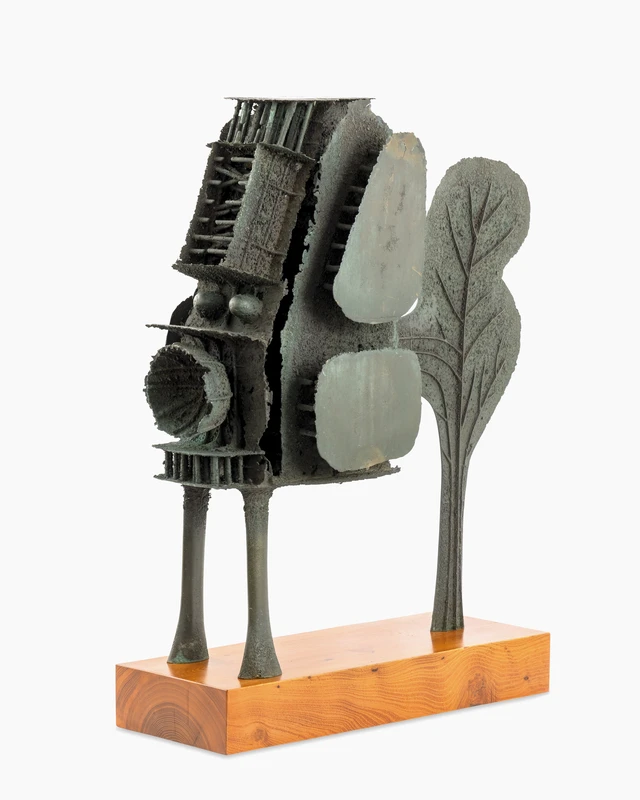Tajiri / Wagemaker
14 Nov-15 Dec 2023


To celebrate the centennial of Shinkichi Tajiri, this wide selection of sculptural works spanning seven decades is presented alongside paintings by his contemporary, the Dutch Informel artist Jaap Wagemaker. Together they participated in the seminal ZERO exhibition in Rotterdamse Kunstkring in 1959 and represented The Netherlands together at the Venice Biennale in 1962.
Born to a family of first-generation Japanese immigrants, Tajiri grew up in the United States. After serving in the all-Japanese American regiment to fight in Europe in 1944, he studied at the Art Institute of Chicago until 1948. That year, with a grant from the G.I bill, he moved to Paris and studied with Ossip Zadkine and Fernand Léger, participated in the 1949 CoBrA exhibition at the Stedelijk Museum. He moved to Amsterdam in 1956 and became a Dutch citizen. Over the years Tajiri created a singular body of work. Primarily a sculptor, he invented new techniques such as red brick casting and elaborate bronze drippings. Warrior imagery recurs in Tajiri’s sculpture in a way that seems to process the horrors and paradoxes he experienced during the war, however, pacifism and spirituality is always principal throughout his work. The later Knot series, celebrating post-war friendships, add a meditative perspective to his work.
In December 2023 the Bonnefanten Museum, Maastricht, will hold a solo exhibition on Tajiri titled ‘The Restless Wanderer’. In 2024, he will be included in the ‘Americans in Paris’ exhibition at the Grey Art Museum, New York, celebrating the G.I Bill and the historical impact of the expatriate Post-War art scene. A major sculpture, ‘Machine No.6’, 1967, was acquired this year by the Tate.
Jaap Wagemaker is The Netherlands’ foremost representative of the international movement known in the 1950s and 60s as Informal Art and more specifically by its technical classification ‘matter painting’. Inspired by his frequent trips to North Africa and Near East, Wagemaker’s first experiments with a freer, more robust use of materials dates from 1956, after which he rapidly establishes his reputation as a ‘matter painter’. Finding fame in Germany in particular, he exhibited in the major galleries. Museum Boijmans Van Beuningen in Rotterdam acquired the first of his works in 1956; his debut exhibition in the Stedelijk Museum Amsterdam was in 1957.